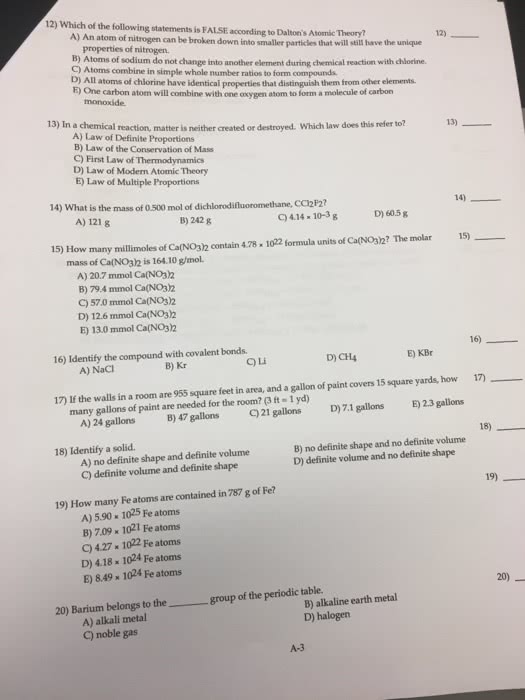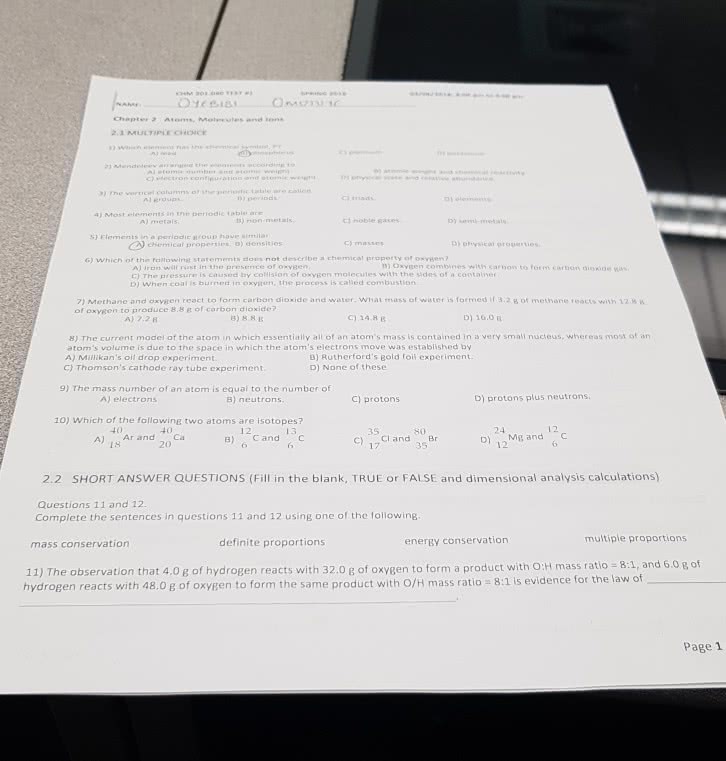CHM 111 Lecture 4: Chapter 2: Atoms and Elements


26
CHM 111 Full Course Notes
Verified Note
26 documents
Document Summary
An element that are similar to each other and different from other elements. Two or more different elements combine to form compounds. Are rearranged to form new combinations in a chemical reaction. Definite proportions: when two atoms of elements combine, there is always a. Co (cid:2869)(cid:2873). (cid:2877)(cid:2877)(cid:2877)(cid:2872)(cid:3034) (cid:2869)(cid:2870). (cid:2868)(cid:2869)(cid:3034) =(cid:883). (cid:885)(cid:885)(cid:883)(cid:889). (cid:884)(cid:1859) :(cid:883)(cid:884). (cid:891)(cid:1859) (cid:1829)= (cid:883). (cid:885)(cid:885)ratio stays. Multiple proportions: when two elements combine, they sometimes combine in ratio. different proportions. Co and co2 inside both are definite proportions. Oxygen molecules o2 are identical to one another. The compound co2 forms when each carbon atoms combines with two oxygen atoms. All atoms present before the reaction are also present after the reaction. A nucleus that contains protons and neutrons. Very small compared to the electron cloud. Electrons in a large, empty space around the nucleus. Thomson discovered the electron, a negatively charged, low mass particle present within all atoms. Majority of particles penetrated a gold foil (gold atoms), undeflected.





